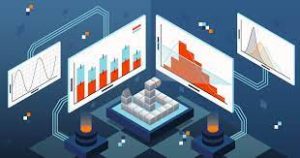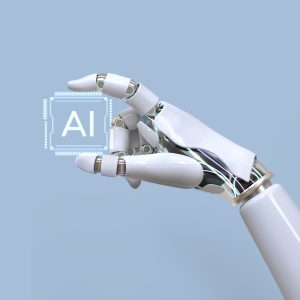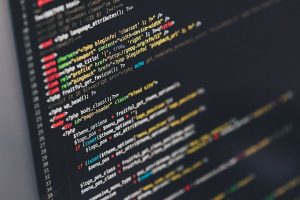Introduction
Python is a versatile and powerful programming language that plays a central role in the toolkit of data scientists and analysts. Its simplicity and readability make it a preferred choice for working with data, from the most fundamental tasks to cutting-edge artificial intelligence and machine learning. Whether you’re just starting your journey in data science or looking to enhance your skills as a data scientist, this guide will equip you with the knowledge and tools to harness the full potential of Python for your data-driven projects. So, let’s embark on this journey to unlock the Python fundamentals that underpin the world of data science.
Table of contents
Useful Python Skills All Data Scientists Should Master
Data science is dynamic, and Python has emerged as a cornerstone language for data scientists. To excel in this domain, acquiring specific Python skills is essential. Here are the ten essential skills every data scientist should master:
Python Fundamentals
- Understanding Python’s Syntax: Python’s syntax is known for its simplicity and readability. Data scientists must grasp the basics, including proper indentation, variable assignment, and control structures like loops and conditionals.
- Data Types: Python offers various data types, including integers, floats, strings, lists, and dictionaries. Understanding these data types is crucial for handling and manipulating data.
- Basic Operations: Proficiency in basic operations such as arithmetic, string manipulation, and logical operations is essential. Data scientists use these operations to clean and preprocess data.
Data Manipulation & Analysis
- Proficiency in Pandas: Python’s Pandas library offers various functions and data structures for data manipulation. Data scientists use Pandas to efficiently load data from multiple sources, including CSV files and databases. This enables them to access and work with data efficiently.
- Data Cleaning: Python, in combination with Pandas, provides powerful tools for cleaning data. Data scientists can use Python to handle missing values, remove duplicate records, and identify and deal with outliers. Python’s versatility simplifies these critical data-cleaning tasks.
- Data Transformation: Python is essential for data transformation tasks. Data scientists can utilize Python for feature engineering, which involves creating new features from existing data to improve model performance. Additionally, Python allows for data normalization and scaling, ensuring that data is suitable for various modeling techniques.
- Exploratory Data Analysis (EDA): Python and libraries like Matplotlib and Seaborn are vital for conducting EDA. Data scientists use Python to perform statistical and visual techniques to uncover data patterns, relationships, and outliers. EDA serves as the foundation for hypothesis formulation and assists in selecting appropriate modeling approaches.
Data Visualization

- Matplotlib and Seaborn: Python libraries like Matplotlib offer various customization options, allowing data scientists to create visuals tailored to their needs. This includes adjusting colors, labels, and other visual elements. Seaborn simplifies the creation of aesthetically pleasing statistical visualizations. It enhances the default Matplotlib styles, making it easier to create visually appealing charts.
- Creating Compelling Charts: Python, with the help of Matplotlib and Seaborn, empowers data scientists to develop various charts, including scatter plots, bar plots, histograms, and heat maps. These visuals are powerful tools for presenting data-driven insights, trends, and patterns. Furthermore, effective data visualization is instrumental in making complex data more accessible and digestible for stakeholders. Visual representations convey information more quickly and comprehensively than raw data, aiding decision-making processes.
- Conveying Complex Insights: Data visualization is essential for giving complex insights through visuals. Python’s capabilities in this domain simplify the communication of findings, making it easier for non-technical stakeholders to understand and interpret data. By translating data into intuitive charts and graphics, Python allows for the compelling storytelling of data, helping to drive decision-making, report generation, and effective data-driven communication.
Data Storage and Retrieval
- Diverse Data Storage Systems: Python offers libraries and connectors for interacting with various data storage systems. For relational databases like MySQL and PostgreSQL, libraries like SQLAlchemy facilitate data access. Libraries like PyMongo allow data scientists to work with NoSQL databases like MongoDB. Additionally, Python can handle data stored in flat files (e.g., CSV, JSON) and data lakes through libraries like Pandas.
- Data Retrieval: Data scientists use Python with SQL to retrieve data from relational databases like MySQL and PostgreSQL. Python’s database connectors and ORM (Object-Relational Mapping) tools simplify the execution of SQL queries.
- Data Integration: Python is instrumental in the Extract, Transform, Load (ETL) processes for integrating data from various sources. Tools like Apache Airflow and libraries like Pandas enable data transformation and loading tasks. These processes ensure that data from different storage systems is unified into a consistent format.
AI and Machine Learning

- Machine Learning Libraries: Python’s scikit-learn library is a cornerstone in machine learning. It provides many machine-learning algorithms for classification, regression, clustering, dimensionality reduction, etc. Python’s simplicity and the scikit-learn library’s user-friendly API make it the go-to choice for data scientists. Working with scikit-learn allows data scientists to build predictive models efficiently and effectively.
- Deep Learning Frameworks: TensorFlow and PyTorch, deep learning frameworks are instrumental in solving complex AI problems. Python serves as the primary programming language for both TensorFlow and PyTorch. These frameworks offer pre-built models, a wide range of neural network architectures, and extensive tools for building custom deep learning models. Python’s flexibility and these frameworks’ capabilities are fundamental for tasks like image recognition, natural language processing, and more.
- Predictive Models: Python creates recommendation systems that provide users with personalized content, products, or services. Data scientists utilize machine learning and deep learning to understand user preferences and make relevant recommendations. Furthermore, Python, in conjunction with machine learning, helps in identifying fraudulent activities by analyzing patterns and anomalies in data. This is crucial for financial institutions, e-commerce platforms, and more. Additionally, Python is essential for predicting future demand, critical for supply chain management, inventory optimization, and ensuring products or services are available when needed.
Programming

- Python Basics: Python’s simplicity and versatility are vital for data scientists. It excels in handling variables, data types, loops, and conditionals. These fundamental skills are used to load, clean, and prepare data for analysis. Python’s readability and straightforward syntax make it a preferred language for working with data.
- Advanced Concepts: Data scientists often delve into advanced Python concepts, including Object-Oriented Programming or OOP. OOP allows the creation of reusable and modular code, which is crucial for managing complex data science projects. It helps in structuring code and organizing data science workflows efficiently.
- Efficient and Maintainable Code: Python’s efficiency in handling large datasets and complex computations is essential. Data scientists must write code that can efficiently process and analyze extensive data, and Python’s libraries and packages, such as NumPy and Pandas, are designed for this purpose. Additionally, well-structured and maintainable code is critical for collaborative data science projects. Python’s clear and organized code style promotes ease of understanding, modification, and extension by other team members. It minimizes errors and reduces debugging time, contributing to efficient teamwork.
Front End Technology
Python is not typically considered a front-end technology for web development. It’s primarily used for back-end development, data analysis, and machine learning. However, Python can be indirectly essential for data scientists working on front-end technologies in the following ways:
- Data Processing and Analysis: Data scientists often work with large datasets to derive insights. Python’s data manipulation libraries, like Pandas and NumPy are instrumental in cleaning and preparing data for visualization on the front end.
- Machine Learning Models: Python is the go-to language for building and training machine learning models. Data scientists can develop predictive models that drive front-end features like recommendations and personalization.
- API Development: Data scientists may create APIs using Python to provide front-end applications with real-time data and predictions.
Statistics
- Data Analysis Foundation: Python provides a versatile environment for data analysis by offering libraries such as Pandas for data manipulation. Data scientists rely on Python’s data analysis capabilities to summarize, clean, and interpret data. It enables them to explore and draw meaningful conclusions from complex datasets.
- Hypothesis Testing: Python offers libraries like SciPy and statsmodels, which contain various statistical tests. Data scientists use Python to apply these tests for hypothesis validation. It allows them to make data-driven decisions, whether it’s A/B testing for website changes or testing the effectiveness of a new drug in a clinical trial.
- Data Distributions: Python’s libraries and functions allow data scientists to work with various data distributions, including the standard, binomial, and Poisson distributions. By understanding and modeling these distributions in Python, data scientists gain insights into data characteristics, which is crucial for making predictions and inferences.
- Statistical Libraries: Python’s scientific computing libraries, NumPy and SciPy, provide a wealth of statistical functions and operations. Data scientists use these libraries for statistical analyses, hypothesis testing, and mathematical operations. Proficiency in these libraries is essential for any statistician or data scientist working with Python.
NoSQL Databases
- Unstructured Data Management: Python’s flexibility and extensive libraries make it ideal for managing unstructured data. Data scientists can use Python to extract, transform, and load (ETL) data from diverse sources into NoSQL databases like MongoDB and Cassandra, enabling them to effectively handle unstructured and semi-structured data.
- Scalability and Flexibility: Python offers a variety of well-maintained drivers and libraries for NoSQL databases. These drivers, like PyMongo for MongoDB, simplify data interaction, making it easier to scale and adapt to evolving data requirements. Python allows data scientists to write custom scripts to manage database scaling and adjust to changing data landscapes.
- Schema-less Design: Python’s dynamic typing and schema-less design align well with NoSQL databases that don’t enforce rigid schemas. Data scientists can use Python to insert data into NoSQL databases without predefined schema constraints. This is advantageous when working with data that may evolve over time, as there’s no need to modify existing schemas in Python scripts.
Pandas

- Pandas as a Foundation: Python is the programming language for Pandas, a widely used data manipulation and analysis library. Pandas introduce data structures such as data frames and series, which Python developers leverage for efficient data cleaning, transformation, and exploration.2.
- Time Series Analysis: Python’s Pandas library has specialized time series analysis tools. Data scientists can efficiently handle time-dependent data in finance and the Internet of Things (IoT) domains. Python offers seamless integration with additional time series analysis libraries like Statsmodels and Prophet. This enhances the data scientist’s ability to create comprehensive time series models.
Conclusion
Python’s simplicity, readability, and vast ecosystem of libraries and tools make it an indispensable asset in the dynamic data science field. Whether you are a data scientist or entering the world of data science, Python skills are your compass. With these skills in your arsenal, you are well-prepared to navigate the ever-evolving landscape of data science, turning raw data into actionable insights and driving innovation in our data-driven world. So, embrace Python’s power and embark on your journey to unlock the endless possibilities of data science.
Frequently Asked Questions
Ans. Yes, Python is highly valuable for data scientists. It offers powerful libraries like Pandas, NumPy, and Scikit-learn, making data manipulation, analysis, and machine learning accessible.
Ans. A significant majority of data scientists use Python. It’s the most popular language in the field, with over 75% of data professionals utilizing it.
Ans. Python’s future in data science looks promising. Its versatility and a growing ecosystem of AI and data-related libraries suggest continued relevance and expansion in the field.




